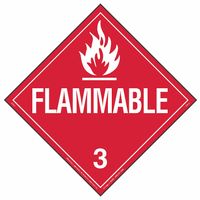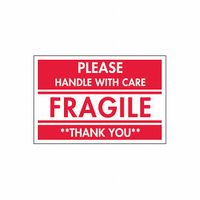Call +(254) 703 030 000 / 751 483 999 / 721 704 777
- Home
- Packaging Shipping
- Package Labels Shipping Equipment
- Special Handling Labels Placards
.....Read More
Frequently Asked Questions
What are the different types of special-handling shipping labels and placards?
Special-handling shipping labels and placards are essential for ensuring the safe and efficient transport of goods that require specific handling or pose potential hazards. Here are the different types:
1. **Hazardous Material Labels**: These labels indicate the presence of dangerous goods. They include:
- **Flammable**: For items that can easily ignite.
- **Corrosive**: For substances that can cause damage to skin or materials.
- **Explosive**: For items that can detonate under certain conditions.
- **Toxic**: For materials that are poisonous if inhaled, ingested, or contacted.
- **Radioactive**: For items emitting ionizing radiation.
2. **Handling Instructions Labels**: These provide specific instructions on how to handle the package:
- **Fragile**: Indicates that the contents are breakable and require careful handling.
- **This Side Up**: Ensures the package is kept in the correct orientation.
- **Keep Dry**: For items that must be protected from moisture.
- **Handle with Care**: General instruction for delicate items.
3. **Temperature-Sensitive Labels**: Used for goods that need to be kept within certain temperature ranges:
- **Refrigerate**: For items that must be kept cool.
- **Freeze**: For goods that need to be frozen.
- **Do Not Freeze**: For items that can be damaged by freezing.
4. **Security Labels**: Indicate that the package contains valuable or sensitive items:
- **Confidential**: For sensitive documents or materials.
- **Security Seal**: Ensures the package has not been tampered with.
5. **International Shipping Labels**: Required for cross-border shipments:
- **Customs Declaration**: Provides information for customs clearance.
- **Country of Origin**: Indicates where the goods were manufactured.
6. **Miscellaneous Labels**: Include any other specific instructions or warnings, such as:
- **Perishable**: For items that have a limited shelf life.
- **Heavy**: Indicates that the package is heavy and may require special equipment to move.
How do hazardous materials shipping labels and placards ensure safety during transport?
Hazardous materials shipping labels and placards are critical for ensuring safety during transport by providing clear, standardized information about the contents of a shipment. These labels and placards serve several key functions:
1. **Identification**: They identify the type of hazardous material being transported, using symbols, colors, and numbers that correspond to specific classes of hazards, such as flammable, corrosive, or toxic substances. This allows for quick recognition by anyone handling or encountering the shipment.
2. **Risk Communication**: By clearly indicating the nature of the hazard, these labels and placards communicate the potential risks associated with the material. This is crucial for emergency responders, who rely on this information to assess the situation and take appropriate action in case of an accident or spill.
3. **Regulatory Compliance**: They ensure compliance with national and international regulations, such as those set by the U.S. Department of Transportation (DOT) and the International Maritime Dangerous Goods (IMDG) Code. Compliance helps prevent legal penalties and ensures that safety standards are uniformly applied.
4. **Handling Instructions**: Labels often include specific handling instructions or precautions, such as "Keep Away from Heat" or "Do Not Drop," which help prevent accidents during loading, unloading, and transport.
5. **Emergency Response**: In the event of an incident, placards provide essential information that guides emergency response teams in implementing the correct procedures to mitigate risks, such as evacuation or containment measures.
6. **Training and Awareness**: They serve as a training tool for workers, reinforcing the importance of safety protocols and increasing awareness of the hazards associated with different materials.
Overall, hazardous materials shipping labels and placards are vital for maintaining safety, protecting human health, and minimizing environmental impact during the transportation of dangerous goods.
What information is typically included on instructional handling labels?
Instructional handling labels typically include the following information:
1. **Handling Instructions**: Clear guidelines on how to handle the package, such as "Fragile," "Handle with Care," or "This Side Up."
2. **Storage Conditions**: Information on the required storage environment, like "Keep Dry," "Store in a Cool Place," or "Keep Away from Sunlight."
3. **Temperature Requirements**: Specific temperature instructions, such as "Refrigerate," "Keep Frozen," or "Do Not Freeze."
4. **Orientation Instructions**: Directions on the correct orientation of the package, often indicated by arrows or phrases like "This End Up."
5. **Weight Indications**: Warnings about the weight of the package, such as "Heavy," "Team Lift," or "Use Mechanical Aid."
6. **Hazard Warnings**: Alerts about potential hazards, including "Flammable," "Corrosive," or "Toxic."
7. **Security Seals**: Labels indicating tamper-evidence or security features, such as "Do Not Accept if Seal is Broken."
8. **Content Descriptions**: Brief descriptions of the contents, especially if they are sensitive or require special handling.
9. **Regulatory Compliance**: Information to ensure compliance with legal or industry standards, such as "FDA Approved" or "CE Mark."
10. **Recycling and Disposal Instructions**: Guidelines for recycling or disposing of the packaging, like "Recycle," "Biodegradable," or "Dispose of Properly."
11. **Barcode or QR Code**: For tracking and inventory purposes, often linked to detailed handling instructions in a database.
12. **Contact Information**: Manufacturer or supplier contact details for further instructions or in case of issues.
13. **Language Translations**: Instructions in multiple languages to accommodate international handling and shipping.
These labels are crucial for ensuring the safe and proper handling, storage, and transportation of goods.
How do damage indicators work and what do they indicate?
Damage indicators are tools or metrics used to assess the extent and impact of damage in various contexts, such as structural engineering, insurance, gaming, and environmental studies. They provide a quantifiable measure of damage, helping to evaluate the severity and guide decision-making processes.
In structural engineering, damage indicators assess the integrity of buildings and infrastructure after events like earthquakes or explosions. These indicators might include visible cracks, deformations, or changes in material properties. Engineers use these indicators to determine the safety and usability of structures, guiding repair or demolition decisions.
In the insurance industry, damage indicators help assess claims after accidents or natural disasters. They include physical evidence like dents, watermarks, or broken components, which are used to estimate repair costs and validate claims.
In video gaming, damage indicators provide players with feedback on the impact of their actions or the actions of opponents. These indicators often appear as visual cues, such as health bars or damage numbers, showing how much damage a character or object has sustained. This information helps players strategize and make informed decisions during gameplay.
In environmental studies, damage indicators assess the impact of human activities or natural events on ecosystems. Indicators might include changes in species population, water quality, or soil erosion. These metrics help scientists and policymakers understand environmental health and develop conservation strategies.
Overall, damage indicators serve as essential tools for evaluating and responding to damage across various fields. They provide critical information that aids in assessing safety, determining financial implications, guiding repairs, and informing strategic decisions.
What are the regulations for using hazardous materials shipping labels and placards?
Regulations for using hazardous materials shipping labels and placards are primarily governed by the U.S. Department of Transportation (DOT) under the Hazardous Materials Regulations (HMR), found in Title 49 of the Code of Federal Regulations (CFR), Parts 100-185. Key points include:
1. **Classification**: Hazardous materials must be classified according to their specific hazard class and division, which determines the appropriate label and placard.
2. **Labeling**: Packages containing hazardous materials must display the correct hazard labels. These labels must be durable, weather-resistant, and placed on a contrasting background. They should be located on the same surface near the proper shipping name.
3. **Placarding**: Vehicles transporting hazardous materials must display placards on all four sides. Placards must be visible, durable, and weather-resistant, with specific size and color requirements.
4. **Specifications**: Both labels and placards must meet size, color, and design specifications as outlined in 49 CFR Part 172, Subpart E (labels) and Subpart F (placards).
5. **Exceptions**: Some materials may be exempt from labeling and placarding under certain conditions, such as limited quantities or specific packaging exceptions.
6. **Training**: Personnel involved in the transportation of hazardous materials must receive training on proper labeling and placarding procedures.
7. **International Standards**: For international shipments, compliance with the International Maritime Dangerous Goods (IMDG) Code, the International Civil Aviation Organization (ICAO) Technical Instructions, and the United Nations Recommendations on the Transport of Dangerous Goods may be required.
8. **Enforcement**: Non-compliance can result in penalties, including fines and shipment delays.
These regulations ensure the safe and efficient transportation of hazardous materials, protecting public safety and the environment.
How can special-handling labels prevent damage to shipments?
Special-handling labels play a crucial role in preventing damage to shipments by providing clear, visual instructions that inform handlers about the specific care required for each package. These labels communicate essential information quickly and effectively, ensuring that everyone involved in the transportation process is aware of the handling requirements.
Firstly, labels such as "Fragile," "This Side Up," or "Handle with Care" alert handlers to the delicate nature of the contents, prompting them to exercise caution during loading, unloading, and transit. This reduces the likelihood of mishandling, dropping, or stacking inappropriately, which can lead to damage.
Secondly, labels indicating temperature sensitivity, like "Keep Refrigerated" or "Protect from Heat," ensure that shipments are stored and transported under the correct environmental conditions. This is vital for perishable goods, pharmaceuticals, and electronics, where temperature fluctuations can cause spoilage or malfunction.
Thirdly, labels such as "Do Not Stack" or "Heavy" inform handlers about weight distribution and stacking limitations, preventing excessive pressure on the package that could lead to crushing or deformation.
Additionally, labels like "Hazardous Material" or "Flammable" ensure that dangerous goods are handled according to safety regulations, minimizing the risk of accidents or contamination.
By providing these clear instructions, special-handling labels help maintain the integrity of the shipment, reduce the risk of damage, and ensure compliance with safety standards. They serve as a universal language that transcends linguistic barriers, making them an essential tool in global logistics and supply chain management.
What are the best practices for applying and using special-handling shipping labels and placards?
1. **Understand Regulations**: Familiarize yourself with relevant regulations such as OSHA, DOT, and international guidelines to ensure compliance.
2. **Correct Label Selection**: Choose labels that accurately represent the contents and handling requirements, such as "Fragile," "This Side Up," or "Hazardous Material."
3. **Durable Materials**: Use labels made from durable materials that can withstand environmental conditions like moisture, temperature changes, and abrasion.
4. **Clear Visibility**: Ensure labels are large enough to be easily seen and read. Use contrasting colors for better visibility.
5. **Proper Placement**: Place labels on multiple sides of the package to ensure visibility from any angle. Avoid placing them over seams or edges.
6. **Consistent Application**: Apply labels consistently across all packages to avoid confusion. Train staff on proper labeling techniques.
7. **Use of Placards**: For larger shipments, use placards that are visible from a distance. Ensure they are securely attached and not obstructed.
8. **Regular Inspection**: Regularly inspect labels and placards for wear and tear. Replace any that are damaged or faded.
9. **Documentation**: Keep records of the labels and placards used for each shipment for tracking and compliance purposes.
10. **Training**: Provide comprehensive training for employees on the importance of special-handling labels and how to apply them correctly.
11. **Technology Integration**: Utilize technology like barcode labels or RFID tags for tracking and ensuring proper handling throughout the shipping process.
12. **Feedback Loop**: Establish a feedback mechanism to learn from any issues encountered and improve labeling practices.
13. **Supplier Coordination**: Work closely with suppliers to ensure they understand and comply with your labeling requirements.


